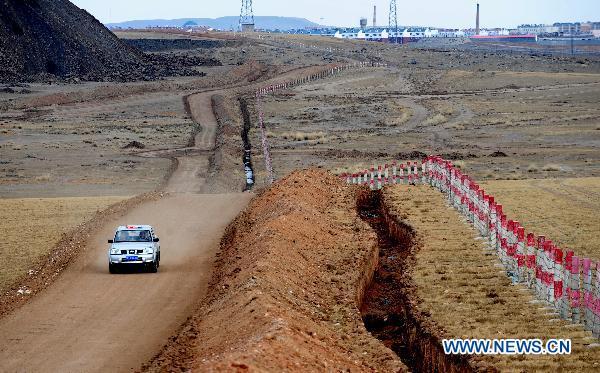 A security vehicle patrols to prevent illegal mining in Bayan Obo, north China's Inner Mongolia Autonomous Region, Oct. 27, 2010. [Xinhua/Ren Junchuan]
A security vehicle patrols to prevent illegal mining in Bayan Obo, north China's Inner Mongolia Autonomous Region, Oct. 27, 2010. [Xinhua/Ren Junchuan]
Rare earths, a class of 17 chemical elements, have become increasingly important in manufacturing sophisticated products, including flat-screen monitors, electric car batteries, wind turbines, missiles and aerospace alloys.
As the high-tech industry developed rapidly in recent years, the global demand and consumption of rare earths grew fast. However, mining these minerals, which are vital for developing a green world, took a toll on environment.
Lax environmental standards and a low industry threshold led to serious overcapacity in China's rare earth market in the past two decades. Excessive and disordered mining of this non-renewable resource then caused environmental degradation and serious resource wastes.
Because of the backward mining technologies, half of the resources were wasted during extraction and processing and the environment was damaged. Although China worked to improve mining methods and minimize environmental damage, experts said pollution was still inevitable during the mining process.
To protect the environment, China announced a number of measures to regulate the rare earth industry, including reduced export quotas, crackdowns on illegal mining and mineral smuggling, issuing no new mining licenses and production caps. Meanwhile, China announced guidelines to encourage mergers and acquisitions in the rare earth sector to enhance industry consolidation.
According to a report by Marc Humphries, energy policy analyst from the Congressional Research Service of the United States, China's rare earth reserves accounted for 36 percent of the world's total in 2009, but output hit 120,000 tonnes, or 97 percent of the world's total. "China is supplying too much rare earths, it's not fair nor sustainable," said Zhao Zengqi, head of the Baotou Rare-earth Research Institute.
China's Commerce Minister Chen Deming said that to protect depletable resources and sustainable development, China would continue to take restrictive measures on the exploitation, production and export of rare earth.
1 2 3 4 5 Next




